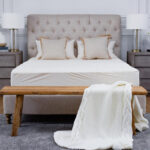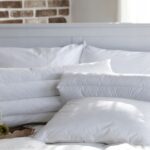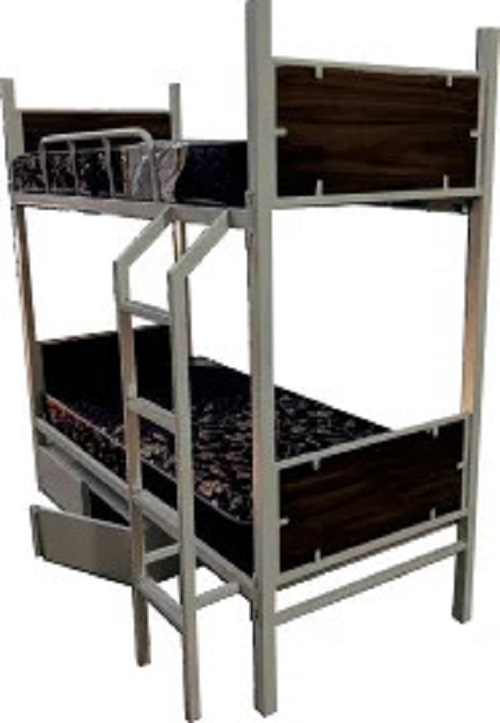Designing and furnishing a child’s bedroom is more than just a decorating task—it’s an opportunity to create a nurturing environment that supports their growth, sparks creativity, and offers a safe haven for rest, play, and learning. As children grow, so do their needs, and choosing the perfect bedroom furniture is essential to ensure the space evolves with them.
In this comprehensive guide, we’ll explore how to choose the perfect children’s bedroom furniture for your little one, from practical tips and safety considerations to style choices and space-saving ideas. Whether you’re furnishing a nursery, designing a toddler’s room, or setting up a tween or teenager’s sanctuary, we’ve got you covered.
Understand Your Child’s Needs and Lifestyle
Before diving into bedroom furniture catalogs or Pinterest boards, take a moment to reflect on your child’s unique personality, daily routines, and developmental stage. A preschooler’s room will have very different needs compared to that of a ten-year-old or a teenager.
Key Considerations:
- Age and stage of development: Babies need cribs and changing tables, while toddlers benefit from low beds and toy storage. Older children may require study desks, wardrobes, and personal shelving.
- Hobbies and interests: A budding artist may need a creative corner, while a book lover might benefit from a cozy reading nook.
- Room size and layout: Measure the room and plan accordingly. Avoid overcrowding by prioritizing multifunctional and scaled-down furniture.
Prioritize Safety First
Safety is the foundation of any child’s space. Kids explore their world physically—climbing, jumping, crawling—so it’s crucial that every furniture piece minimizes risk.
Safety Guidelines:
- Rounded edges: Choose furniture with smooth, rounded edges to reduce injury risk.
- Sturdy construction: Avoid flimsy materials. All items should be well-built and capable of withstanding daily wear and tear.
- Anchoring: Secure heavy furniture such as dressers and bookshelves to the wall to prevent tipping.
- Non-toxic finishes: Opt for furniture painted with child-safe, lead-free, and low-VOC paints.
- Height-appropriate designs: Furniture, such as a toy chest, chair, or wardrobe, should be accessible to the child.
Invest in Key Furniture Essentials
A well-furnished child’s bedroom doesn’t require excessive items. Focus on essential furniture pieces that form the backbone of the room. These can be customized or added to as your child grows.
Must-Have Furniture Pieces:
1. Bed
The centerpiece of the room. Depending on age, choose:
- Crib or convertible crib (infants)
- Toddler bed (2–5 years old)
- Single or twin bed (5+ years)
- Loft or bunk beds (shared rooms or space-saving solutions)
Tip: Consider beds with built-in drawers or trundles for extra storage.
2. Mattress
Don’t skimp on quality. Choose a firm, supportive mattress with hypoallergenic materials. Always pair with a waterproof mattress protector.
3. Wardrobe or Closet Organizer
Children need accessible storage for clothing. Look for wardrobes with lower drawers and adjustable hanging rods.
4. Dresser or Chest of Drawers
Ideal for storing clothes, accessories, or toys. Opt for smooth-gliding drawers and anti-tip hardware.
5. Desk and Chair
For school-age children, create a dedicated space for homework and creative activities. Choose ergonomically designed chairs and desks with storage space.
6. Bookshelves or Storage Units
Encourage a love of reading and tidiness with open shelving units or cube organizers that display books, toys, and craft supplies.
Think Long-Term: Choose Furniture That Grows With Your Child
Children grow fast—and so do their needs. Whenever possible, choose adjustable or convertible furniture that evolves over time.
Smart Long-Term Choices:
- Convertible cribs that transform into toddler or full-sized beds
- Desks with adjustable heights
- Extendable wardrobes with removable or repositionable shelves
- Modular furniture systems that can be rearranged or repurposed
These options may cost more upfront but save money and effort in the long run.
Space-Saving Furniture for Small Bedrooms
Not every child has a large room. Thankfully, today’s Furniture for teen bedrooms designs offer clever space-saving solutions that maximize function without compromising comfort.
Top Picks for Compact Spaces:
- Bunk beds: Ideal for shared rooms or to free up floor space for play.
- Loft beds: Create room below for a desk, reading area, or play zone.
- Under-bed storage drawers: Store seasonal clothes, toys, or extra linens.
- Foldable desks: Wall-mounted or fold-out options are great for small study areas.
- Storage benches or ottomans: Provide seating and hidden storage in one.
Pro Tip: Use vertical space! Tall bookshelves, hanging wall organizers, and pegboards are your best friends in small rooms.
Infuse Personality and Fun with Themed Furniture
While the basics are important, don’t forget to make the space fun and reflective of your child’s personality. Themed furniture can bring a sense of magic and identity to the room.
Popular Themes:
- Princess or castle beds
- Race car or firetruck beds
- Jungle, safari, or animal-themed furniture
- Space or science-themed desks and decor
- Scandinavian minimalism for older kids and teens
However, keep in mind that children’s tastes evolve quickly. Consider using interchangeable accessories (like decals, bedding, or rugs) to reflect current interests, while keeping furniture more neutral and timeless.
Encourage Independence Through Thoughtful Furniture Placement
A child’s room should promote independence and confidence. How you place furniture matters just as much as what you buy.
Tips for Layout:
- Low storage units for easy access to toys and books
- Hooks or hangers at child-height for coats or bags
- Step stools for reaching sinks or higher shelves
- Clearly defined zones for sleeping, playing, studying, and dressing
Designing a room where your child can do things on their own helps build responsibility and self-esteem.
Storage is Key: Keep It Organized and Tidy
Children’s rooms tend to become messy quickly. Combat clutter with smart storage solutions that are practical and kid-friendly.
Effective Storage Ideas:
- Toy bins: Stackable, colorful bins make cleanup a breeze.
- Bookshelves with labeled baskets: Combine open and closed storage.
- Under-bed boxes: Utilize hidden spaces.
- Wall-mounted shelves or cubbies: Keep important items off the floor.
- Closet organizers: Use hanging shelves, shoe racks, and boxes to make the most of closet space.
Tip: Involve your child in the organizing process—it teaches them valuable habits.
Choose the Right Materials for Durability and Maintenance
Kids can be tough on furniture. Spills, scratches, and general wear-and-tear are inevitable. Opt for durable, easy-to-clean materials that can withstand their active lifestyle.
Best Materials:
- Solid wood: Long-lasting and strong, ideal for beds and dressers
- Laminates or MDF with child-safe finishes: Budget-friendly and easy to clean
- Metal frames: Good for bunk beds or desks
- Stain-resistant upholstery: Especially important for chairs and headboards
Avoid delicate materials like glass or velvet in a child’s room.
Let Your Child Have a Say
Whenever appropriate, involve your child in the decision-making process. This fosters ownership and excitement about their space. Ask them to pick:
- Their favorite bedspread or pillow
- A color for the walls
- A special chair or reading lamp
- The theme of their décor
While you should guide choices for safety and longevity, giving them a voice helps create a room that feels truly theirs.
Consider Eco-Friendly and Sustainable Options
More parents are looking to make eco-conscious furniture choices—and for good reason. Sustainable furniture is better for the environment and often safer for your child.
What to Look For:
- FSC-certified wood
- Water-based or non-toxic finishes
- Reclaimed or recycled materials
- Furniture brands with ethical manufacturing practices
Buying fewer, better-quality pieces also supports sustainability by reducing waste.
Don’t Forget Lighting and Accessories
While furniture forms the core of the room, lighting and accessories enhance function and add charm.
Lighting Ideas:
- Soft nightlights for comfort and safety
- Desk lamps for homework
- Ceiling or pendant lights with dimmers for flexibility
Accessory Suggestions:
- Themed rugs
- Wall decals or framed art
- Canopies or tents for imaginative play
- Growth charts
- Chalkboard walls or corkboards
These finishing touches add personality and fun, turning a bedroom into a dream space.
Conclusion: The Right Furniture Makes All the Difference
Choosing the perfect bedroom furniture for your child is about balancing safety, style, function, and fun. By understanding your child’s needs, investing in long-lasting essentials, and creating a space that encourages independence and creativity, you’re doing more than furnishing a room—you’re building a foundation for comfort, confidence, and growth.
Whether you’re starting from scratch or giving a bedroom a seasonal refresh, let your choices reflect both practicality and imagination. A well-designed space tailored to your child’s world can truly support them at every age and stage.
Are you looking for the best children’s bedroom furniture? If so, visit us today to explore Affordable kids’ bedroom sets.
- How to Choose the Perfect Bedroom Furniture for Your Child
- Explore how to choose the perfect children’s bedroom furniture for your little one, from practical tips and safety considerations to style choices and space-saving ideas. Whether you’re furnishing a nursery, designing a toddler’s room, or setting up a tween or teenager’s sanctuary, we’ve got you covered.
- Bedroom Furniture, Furniture, essential furniture pieces, children’s bedroom furniture
Related posts:
 The Complete Guide to Selecting the Best Italian Marble to Install in Your Home or Office
The Complete Guide to Selecting the Best Italian Marble to Install in Your Home or Office
 How to Choose the Perfect Soft Mattress Topper That Suits Your Comfort
How to Choose the Perfect Soft Mattress Topper That Suits Your Comfort
 Confidential & Convenient: Get an STD Test at Home with Doctor on Call in Dubai
Confidential & Convenient: Get an STD Test at Home with Doctor on Call in Dubai
 Key Steps in Kitchen Installation Poole | Complete Guide 2025
Key Steps in Kitchen Installation Poole | Complete Guide 2025
 “How to Plan a Successful, Stylish, and Budget-Friendly Interior Renovation”
“How to Plan a Successful, Stylish, and Budget-Friendly Interior Renovation”
 How to Plan a Successful Poultry Farm Construction Project Easily
How to Plan a Successful Poultry Farm Construction Project Easily
 Struggling with Flat Pillows? Discover the Lasting Fluff of Down Feather Options
Struggling with Flat Pillows? Discover the Lasting Fluff of Down Feather Options
 Designing inside the Wilderness Isn’t Easy—Here’s Why Log Cabin Contractors Are the Experts You Need
Designing inside the Wilderness Isn’t Easy—Here’s Why Log Cabin Contractors Are the Experts You Need







